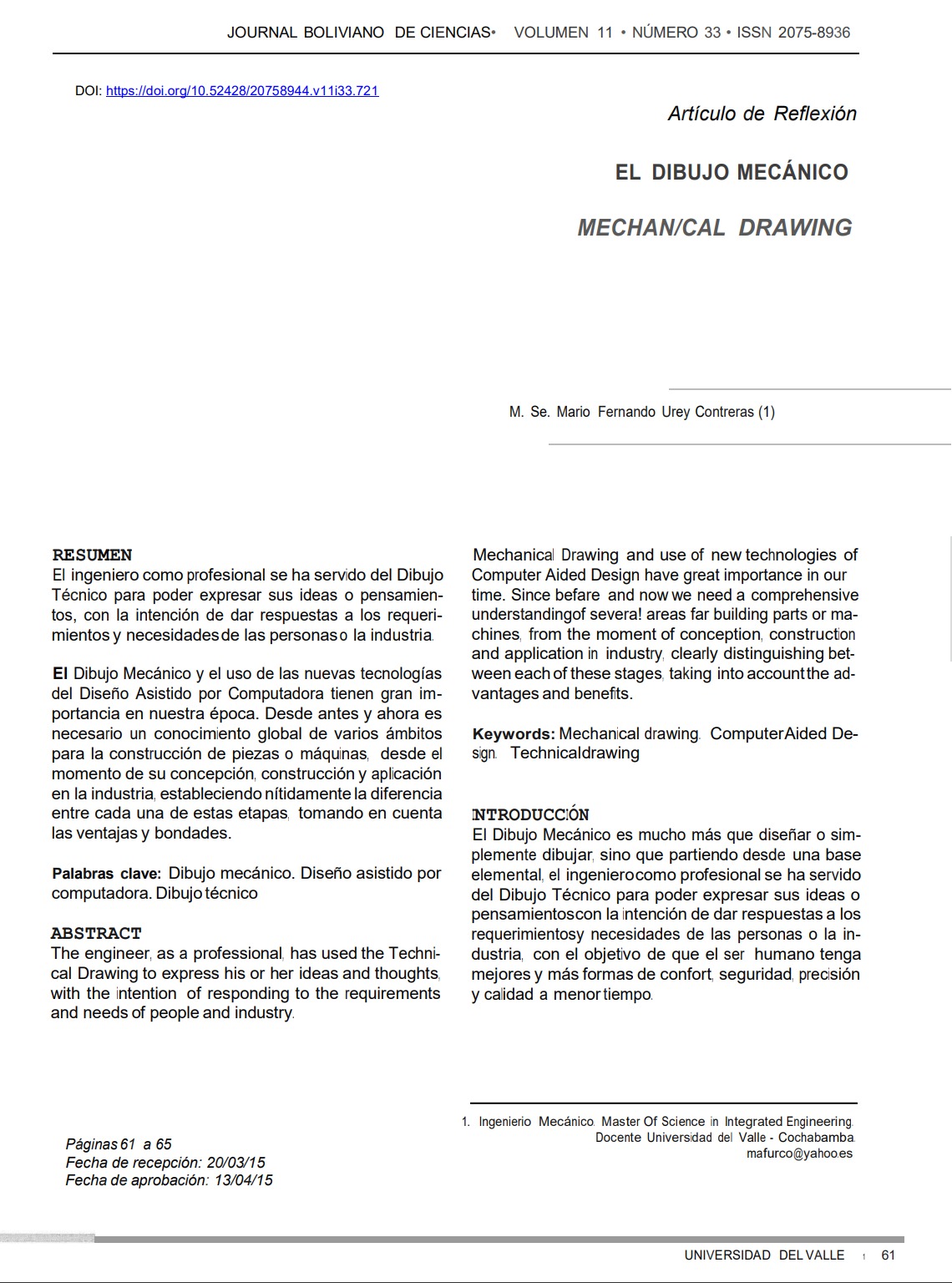Mechanical Drawing
DOI:
https://doi.org/10.52428/20758944.v11i33.721Keywords:
Mechanical drawing, Computer Aided Design, Technical drawingAbstract
The engineer, as a professional, has used the Technical Drawing to express his or her ideas and thoughts, with the intention of responding to the requirements and needs of people and industry. Mechanical Drawing and use of new technologies of Computer Aided Design have great importance in our time. Since befare and now we need a comprehensive understanding of severa! areas far building parts or machines, from the moment of conception, construction and application in industry, clearly distinguishing between each of these stages, taking into account the advantages and benefits.
Downloads
References
(1) F. JAVIER RODRIGUEZ DE ABAJO, VICTOR ÁLVAREZ BENGOA. Dibujo Técnico 1. Editorial Donostiarra. Email:info@libross.com-www.libros.com
(2) Técnicas de Expresión Gráfica 1-2. Rama Metal -Segunda Edición. Ediciones Don Bosco - Editorial Bruño. www.edebe.es/publicaciones-generales
(3) MUÑOZ CALDERÓN, Alejandro. Ensayo de Blog. Pruebablogalejandroc14.blogspot (2014).
(4) http://es.thefreedictionary.com/racionai lzar
(5) www.slcluezar.com (2014).

Downloads
Published
How to Cite
Issue
Section
License
Copyright (c) 2015 Mario Fernando Urey Contreras

This work is licensed under a Creative Commons Attribution 4.0 International License.
Authors who publish with this journal agree to the following terms:
- Authors retain copyright and grant the journal right of first publication with the work simultaneously licensed under a Creative Commons Attribution License 4.0 that allows others to share the work with an acknowledgement of the work's authorship and initial publication in this journal.
- Authors are able to enter into separate, additional contractual arrangements for the non-exclusive distribution of the journal's published version of the work (e.g., post it to an institutional repository or publish it in a book), with an acknowledgement of its initial publication in this journal.
- Authors are permitted and encouraged to post their work online (e.g., in institutional repositories or on their website) prior to and during the submission process, as it can lead to productive exchanges, as well as earlier and greater citation of published work.














